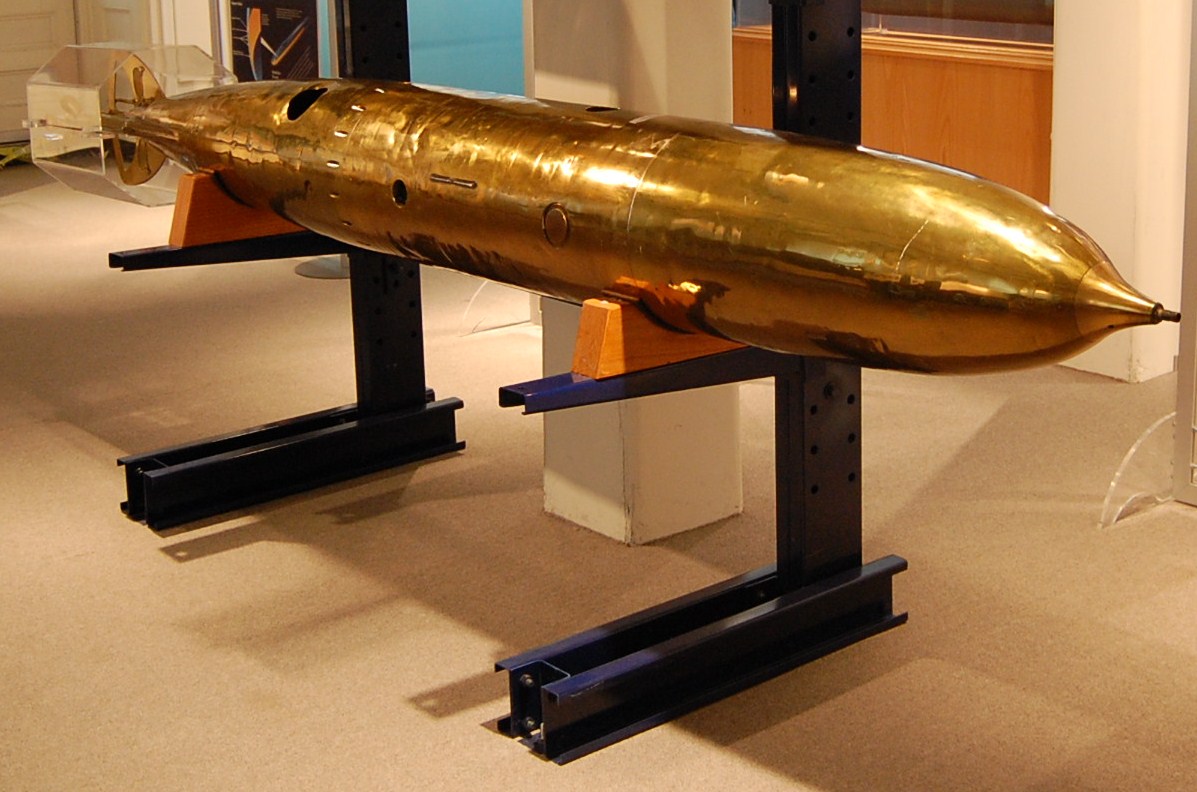A surviving Howell torpedo in the Naval War College Museum, Newport, Rhode Island
The Howell was the first self-propelled torpedo acquired by the US Navy in large numbers. The weapon was designed by Lieutenant Commander (later Rear Admiral) John A. Howell of the US Navy in all the way back in 1870. But due to lack of interest and funds, the weapon wasn't produced in large numbers until 1889, when the Navy ordered 50 examples from the Hotchkiss Ordnance Company located in Providence, Rhode Island. The Howell was deployed on the Navy's battleships with deck mounted tubes, and on the early torpedo boats that served in the Spanish-American war. It was replaced by the Whitehead Torpedo in 1898, as the Whitehead had greater potential for improvement. The last of Howell's torpedoes were removed from the inventory in 1900.
USS Stilleto launching a Howell sometime around 1890
Technically, the Howell was interesting as, unlike its contemporaries, it used a forged steel flywheel that weighed 131 pounds to both stabilize and power the weapon. The flywheel was spun up by steam from the ship's engine to somewhere between 10,000 and 12,000 revolutions per minute, which gave the torpedo a speed of about 25 knots and an effective range of approximately 400 yards. Due to the large flywheel acting as a gyroscope, the Howell tended to travel in a straight line. If disturbed by waves, then the weapon would just roll over instead of deviating from its course. It was the first torpedo to ever use a gyroscope in this way.
Another novel feature was the Speed Regulator, which adjusted the pitch of the two propellers as the flywheel spun down, keeping the torpedo moving at a mostly consistent speed.
The warhead was a total 100 pounds of wet guncotton, with a contact detonator. When used for tests, the warhead was replaced with a dummy warhead that was filled with fresh water and lead weights to mimic the weight of the real thing. The screw fan on the nose acted as the arming system and required thirty or forty yards of running distance in the water to arm properly.
While it did not produce as much of a wake as the Whitehead which used compressed air, the Howell's flywheel was very loud. The replacement of the Howell with the Whitehead ended work on making it quieter.
Another flaw was that the Howell was poor at depth keeping.
Another flaw was that the Howell was poor at depth keeping.
A cutaway showing the general parts of the weapon, part 'F' is the flywheel
Specifications:
Length: 132 inches
Diameter: 14.2 inches
Weight: 580 pounds
Propulsion: Prespun Flywheel
Warhead: 100 pounds of wet guncotton (82 lb. 12oz guncotton. 20% water)
Detonator: Contact with a percussion cap
Detonator: Contact with a percussion cap
Speed: 25 knots
Range:
Effective: 400 yards
Maximum: 800 yards (flywheel runs down)
Sources:
https://www.history.navy.mil/museums/keyport/html/part2.htm
https://www.history.navy.mil/museums/keyport/html/history1.htm
https://maritime.org/doc/howell/ - A breakdown of the parts
https://maritime.org/doc/howell/plates1.htm - Blueprints of the torpedo parts



Comments
Post a Comment